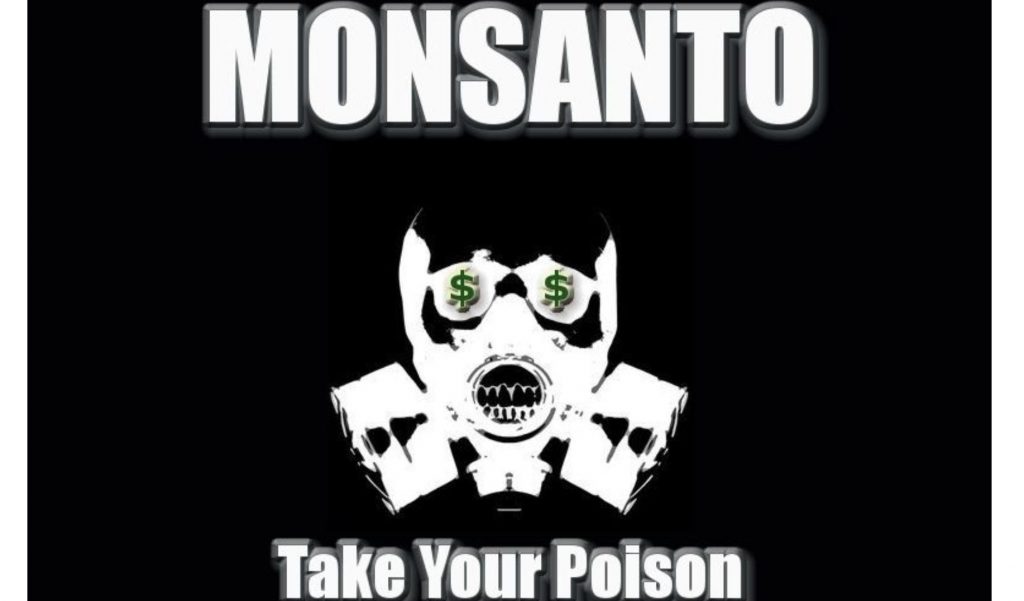Monsanto Is Paying Farmers To Use Its Controversial Pesticide December 14, 2017

By
Aaron KeselCorporate pesticide maker Monsanto, which has faced several recent lawsuits against its products, is paying farmers to use its controversial weedkiller XtendiMax with VaporGrip, an herbicide based on a chemical known as dicamba,
Yahoo News reported.
The incentive to use XtendiMax aims to refund farmers over half the sticker price of the product in 2018 if they spray it on soybeans that Monsanto engineered to resist it, according to company data.
- Quote :
- “We believe cash-back incentives for using XtendiMax with VaporGrip Technology better enable growers to use a management system that represents the next level of weed control,” said Ryan Rubischko, Monsanto product manager.
Monsanto faces bans and restrictions of its pesticides in several states due to damaged crops from its product which affected
3.1 million acres in nearly two dozen states, according to
Reuters.
Reuters reported:
- Quote :
- XtendiMax costs about $11 per acre to buy, and Monsanto is offering an extra $6 per acre in cash back to farmers when they apply it on Xtend soybeans, rather than using another seed-and-chemical combination to control weeds.
The rebate means farmers can receive up to $11.50 per acre in cash back next year when they use XtendiMax along with other approved chemicals, such as one called Intact that aims to prevent drift and costs $2.40 per acre, according to Monsanto.
Monsanto launched a program offering incentives to use multiple herbicides in 2010, according to Reuters.
On Monday of this week, Missouri stated it would ban spraying of XtendiMax in 10 counties after June 1, 2018, and statewide after July 15, 2018, STLPublicRadio
reported.
Earlier last month, North Dakota said it planned to prohibit the use of dicamba herbicide formulations – XtendiMax, Engenia, and FeXapan after June 30th, 2018 or after the first bloom (R1 growth phase), whichever comes first, restricting the products’ use.
The North Dakota Department of Agriculture
press release also noted that no applications may be made if air temperature of the field at the time exceeds 85 degrees Fahrenheit. The announcement added that applicators must maintain a speed of 12 miles per hour or less when applying products, and they can only apply the chemicals one hour after sunrise to one hour before sunset.
Additionally, last month Monsanto
stopped the launch of a new chemical product in its line called NemaStrike designed to be applied to crop seeds to protect them from worms and other bugs after reports indicated that it caused strange rashes on people who came into contact with the chemical.
The EPA last year
approved the use of a new version of Monsanto’s weed killer using dicamba on crops during last summer.
That product is also under fire by farmers for causing
widespread damage to their crops that are not GMOs designed to resist the chemical. Dicamba was even banned in Arkansas by the Plant Board which Monsanto
disputed and sued the group for acting outside its authority in prohibiting its herbicide’s use and failing to consider research Monsanto had submitted to federal regulators.
Dicamba is considered more toxic than glyphosate, but less toxic than 2,4-D, the third most common broadleaf herbicide. (Monsanto is working on crops that are resistant to 2,4-D, as well.) Yet, when used properly, dicamba is considered only mildly toxic to people, pollinators, wildlife, and aquatic organisms. There is no scientific consensus on whether it has cancer-causing properties, though the
EPA says “Dicamba is not likely to be a human carcinogen.”
The difference between Roundup and Dicamba is that the latter is more volatile and can easily become airborne and drift from where it was sprayed.
Glyphosate was also listed as a carcinogen on
California EPA’s Prop 65 list in July of 2017, while a study
published in January of 2017 proved that chronic consumption of low levels of Roundup (which contains glyphosate)
caused fatty liver disease in animals.
The chemical was also
deemed a “probable human carcinogen” by the World Health Organization’s International Agency for Research on Cancer in March 2015, and has been recently found in five different brands of orange juice including top brands like Tropicana,
Natural Blaze reported.
Monsanto is facing multiple pronged attacks against its dangerous products, finally being exposed for their cancer-causing elements in their chemicals and other health hazards in not one, not two, but three different commodities.
The U.S. Environmental Protection Agency has mandated
special training for dicamba users for 2018, requiring farmers to keep records proving they were complying with label instructions.
